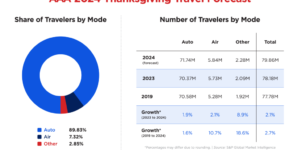The growing frequency and severity of natural disasters amid rising home repair costs, along with other economic factors, have contributed to less affordable homeowners insurance, according to a newly released Insurance Research Council (IRC) Research Brief.
The IRC, an affiliate of The Institutes, measures affordability using the ratio of average homeowners insurance expenditures to median household income.
In 2020, U.S. households spent an average of 1.93 percent of their income on homeowners insurance.
Homeowners insurance was most affordable in Utah, where households spent 0.92 percent of their annual income on homeowners insurance in 2020, the IRC analysis found. Other states with low expenditure-to-income ratios in 2020 included Oregon, Wisconsin, Washington and New Hampshire.
The least affordable states in 2020, according to the report, included Louisiana (3.84 percent), Florida, Oklahoma, Mississippi and Alabama, in that order.
Cost drivers, which vary from state to state, determine homeowners insurance rates. They include the number of claims paid, average claim payment, weather and other natural hazard risks, and other perils that a home insurance policy covers, such as losses due to theft and vandalism, the IRC report stated.
Expenses related to the amount insurers spend to process, investigate and litigate claims, as well as the percent of homeowners claims with litigation, are also factors impacting homeowners insurance rates.
The report found that average premiums have grown faster than personal income over the past two decades.
The expenditure share of income averaged 1.54 percent in the 2000s and then rose to an average of 1.99 percent in the 2010s, according to IRC’s analysis.
“This measure dropped slightly in 2019 and 2020, but the data that is currently available does not address the more recent increases in insurance costs,” the report stated.
Deteriorating affordability in Florida and California, for example, has been coupled with availability issues, due to insurers either reducing their exposure or by withdrawing from specific markets entirely.
“By examining what’s driving up the cost of claims, insurers and policymakers can identify opportunities for improving both the affordability and availability of homeowners insurance nationwide,” said Dale Porfilio, president, IRC. Porfilio is also the chief insurance officer of the Insurance Information Institute (Triple-I). “At the same time, insurers must be able to price their policies to reflect the risks they’re assuming.”
The IRC’s analysis looks at the affordability of homeowners insurance for the overall population and does not address the issue of affordability for specific demographic or geographic risk profiles. These data also exclude flood and earthquake insurance, which are not part of standard homeowners policies. The average premium can vary significantly, depending on several factors including a home’s location, its insured value (e.g., what it would cost to rebuild the home in its current location, in the event of a total loss), coverage options, and the insurer.





















 Bumps Ahead as Disruption Drives Changes in Auto Insurance
Bumps Ahead as Disruption Drives Changes in Auto Insurance  New Hampshire High Court Invalidates GEICO Underinsured Claim Provision
New Hampshire High Court Invalidates GEICO Underinsured Claim Provision  Florida Home Sales Decline Amid Hurricane Recovery, Surging HOA and Insurance Costs
Florida Home Sales Decline Amid Hurricane Recovery, Surging HOA and Insurance Costs  Cyber Threats, Climate and Business Interruption Risks Top Insurance Buyers/Sellers Concerns
Cyber Threats, Climate and Business Interruption Risks Top Insurance Buyers/Sellers Concerns 